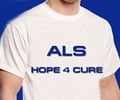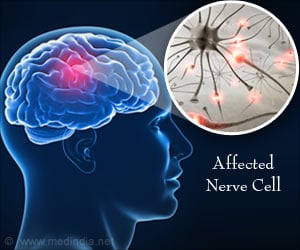Brain–computer interface based on functional near infrared spectroscopy (fNIRS) helps people who are in completely locked-in state to communicate.
- Locked-in syndrome is a rare neurological disorder in which the patient cannot move or communicate verbally due to complete paralysis of all the voluntary muscles.
- Patients suffering from locked-in syndrome were able to communicate through the brain-computer interface, using only their thoughts.
- The brain-computer interface used near-infrared spectroscopy combined with electroencephalography (EEG) to interpret thoughts by measuring blood oxygenation and electrical activity in the brain.
Communication is the process of expressing and sharing feelings, thoughts, and intentions with one another by verbal and various non-verbal means.
But individuals who are affected by motor neuron condition, normal communication faces several hurdles and challenges.
Locked-in Syndrome
Locked-in syndrome is a rare neurological disorder that leads to complete paralysis of all the voluntary muscles. But awareness, cognitive function, eye movements and also blinking are usually unaffected. These individuals communicate through eye movements or blinking. Hence, it is also called a pseudo-coma.
The pons contains important neuronal pathways between the cerebrum, spinal cord and cerebellum.
Other causes of locked-in syndrome include infection in certain portions of the brain, tumors, loss of the protective insulation (myelin) that surrounds nerve cells, inflammation of the nerves, and certain disorders such as amyotrophic lateral sclerosis (ALS).
Individuals with locked-in syndrome classically cannot consciously or voluntarily chew, swallow, breathe, speak, or produce any movements other than those involving the eyes or eyelids.
It can affect individuals of any age including children.
Complete locked-in syndrome refers to the state where there is complete motor paralysis including loss of eye movements. But the emotional and cognitive processes remain intact.
Previously it was thought that people suffering from completely locked-in syndrome are incapable of communicating and that they lack the goal-directed thinking necessary to use a brain-computer interface.
Trial
Patients with completely locked-in syndrome were able to respond "yes" or "no" to spoken questions, by thinking the answers during the trial.
A non-invasive brain-computer interface detected their responses by measuring changes in blood oxygen levels in the brain.
To interpret the thoughts of the patients, the brain-computer interface used functional near-infrared spectroscopy (fNRIS) combined with electroencephalography (EEG) to measure blood oxygenation and electrical activity in the brain.
Though communication among paralyzed patients has been possible by brain-computer interfaces previously, near-infrared spectroscopy has been the only successful approach to restore communication in patients suffering from completely locked-in syndrome.
Four patients with ALS (amyotrophic lateral sclerosis, also known as Lou Gehrig's disease), were included for the study.
ALS is a progressive motor neuron disease that affects the nerve cells of the brain and spinal cord.
It leads to complete destruction of the part of the nervous system responsible for movement. When the nerve cells are affected, the muscles being supplied by the nerve, do not get any nourishment and as a result, they waste (atrophy) away. There is no known cure for ALS.
In 2011, its prevalence was estimated to be 3.9 cases per 100,000 persons in the general population in the United States.
As the disorder progresses, all muscular functions are lost and eventually it destroys the respiratory and bulbar functions, forcing the individual to make vital decisions.
If the individuals opt for life and accept artificial respiration, they can no longer communicate verbally. They use assistive communication devices that rely on non-verbal signals such as finger movement and gaze fixation.
In ALS, the disorder progresses to a stage where the patients loses control of the last muscular response, usually the eye muscles, a condition known as completely locked-in state.
Open Questions
The researchers asked personal questions and open-ended questions like "Your husband's name is Joachim?" and "Are you happy?", the answers to which were familiar to the patient.
In 70% of the trials, correct responses were elicited by the questions.
Professor Birbaumer said, "The striking results overturn my own theory that people with completely locked-in syndrome are not capable of communication. We found that all four patients we tested were able to answer the personal questions we asked them, using their thoughts alone. If we can replicate this study in more patients, I believe we could restore useful communication in completely locked-in states for people with motor neuron diseases."
Repetition of the question "Are you happy?", over weeks resulted in a consistent "yes" response from the four people.
Professor Birbaumer added, "We were initially surprised at the positive responses when we questioned the four completely locked-in patients about their quality of life. All four had accepted artificial ventilation in order to sustain their life, when breathing became impossible; thus, in a sense, they had already chosen to live. What we observed was that as long as they received satisfactory care at home, they found their quality of life acceptable. It is for this reason, if we could make this technique widely clinically available, it could have a huge impact on the day-to-day life of people with completely locked-in syndrome".
Professor John Donoghue, Director of the Wyss Center, said, "Restoring communication for completely locked-in patients is a crucial first step in the challenge to regain movement. The Wyss Center plans to build on the results of this study to develop clinically useful technology that will be available to people with paralysis resulting from ALS, stroke, or spinal cord injury. The technology used in the study also has broader applications that we believe could be further developed to treat and monitor people with a wide range of neurodisorders."
The research was conducted by a multinational team, led by Professor Niels Birbaumer, at the Wyss Center for Bio and Neuroengineering in Geneva, Switzerland and published in PLOS Biology.
References:
- Niels Birbaumer et al. Brain–Computer Interface–Based Communication in the Completely Locked-In State. PLOS Biology ; (2017) doi.org/10.1371/journal.pbio.1002593
- Locked In Syndrome - (https://rarediseases.org/rare-diseases/locked-in-syndrome/)
- Locked-in Syndrome - (http://cirrie.buffalo.edu/encyclopedia/en/article/303/)
- What is ALS? - (http://www.alsa.org/about-als/what-is-als.html?referrer=https://www.google.co.in/)
- Prevalence of Amyotrophic Lateral Sclerosis — United States, 2012–2013 - (https://www.cdc.gov/mmwr/volumes/65/ss/ss6508a1.htm)











